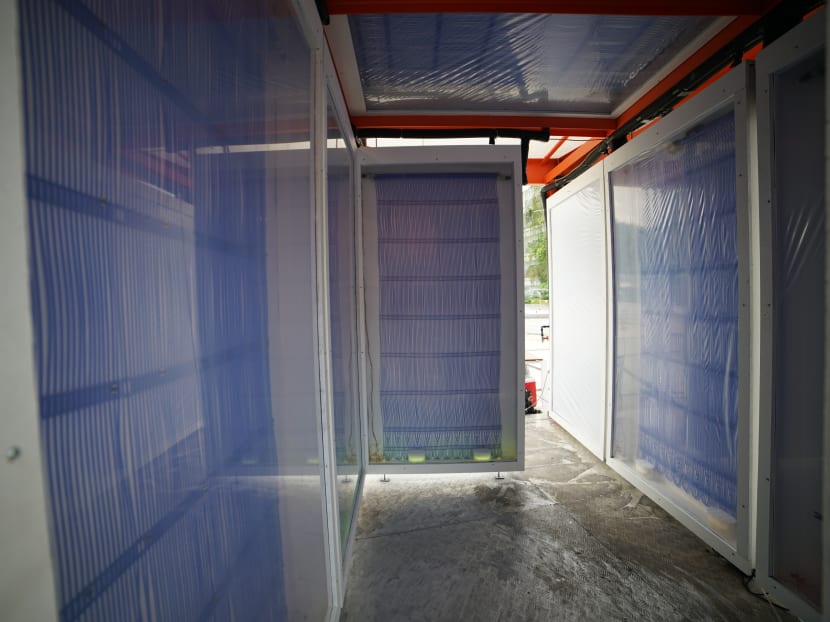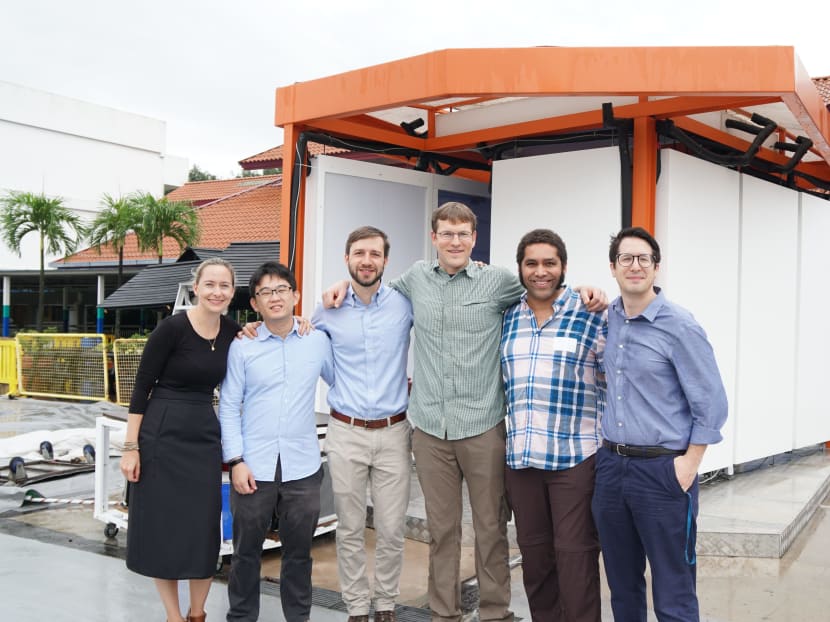In the works: ‘Cold Tube’ to beat the heat in humid Singapore without aircon
SINGAPORE — A team of researchers at the Singapore-ETH Centre have found a way to keep people cool outdoors with a new energy-efficient technology that does not involve air-conditioning.

The Cold Tube is the world’s first successful demonstration of radiant cooling technology used outdoors in the tropics.
SINGAPORE — A team of researchers at the Singapore-ETH Centre have found a way to keep people cool outdoors with a new energy-efficient technology that does not involve air-conditioning.
Called the Cold Tube, it is the world’s first successful demonstration of radiant cooling technology used outdoors in the tropics, and the researchers hope to see it being used one day at bus stops, hawker centres and sheltered walkways.

With some adaptation, the Cold Tube can also be used in indoors spaces such as classrooms and offices.
The project by the 12-member team was started last year as a collaboration among Canada’s University of British Columbia, the University of California Berkeley and Princeton University from the United States, as well as the Singapore-ETH Centre.
The Singapore-ETH Centre, set up by ETH Zurich – the Swiss Federal Institute of Technology and the National Research Foundation Singapore under its Campus for Research Excellence and Technological Enterprise (Create) programme, is a research centre dedicated to finding practical solutions to some of the global challenges on environmental sustainability.
HOW DOES COLD TUBE WORK?
The body generally removes excess heat in two ways: Through convection, where the body loses heat directly to the air, or through radiation, where the body emits thermal radiation.
The Cold Tube works by radiation.
It is a panel made up of tubes carrying chilled water at 13°C.
Because the direction of thermal radiation is always from a hotter surface to a colder surface, when a person stands in front of or near the panel, the heat from the body radiates towards the colder panel, cooling the body down to a comfortable level.
To keep the panels cold, a series of chilled water tubes run inside it, while a heat pump keeps the temperature of the water constant by dumping excess heat into the surrounding air.
HOW DOES IT SAVE ENERGY?
Radiant cooling is a more efficient use of energy than conventional heating, ventilation, air-conditioning (HVAC) systems that cool the body through convection.
HVAC systems require large amounts of energy to cool huge volumes of air around people, which then cools the person down through convection.
Since the Cold Tube does not cool the surrounding air but cools the body directly, it does not need an enclosed area for it to work, thus allowing it to be used outdoors or in rooms with open windows and natural ventilation.
However, when it is placed outdoors, condensation will take place when these panels are exposed to the humid outdoor air — a process that creates unwanted heat and causes mould to form over time.
A special membrane is thus used, allowing radiant cooling to take place while preventing condensation, so that excess energy is not needed to keep the system cool.
The researchers next have to work on finding a material for the panel hardy enough to withstand real-world usage in the humid and hot tropics.
Right now, about 60 per cent of the energy needs of a typical commercial building is consumed by air-conditioning.
With proper controls, radiant systems such as the Cold Tube could save up to 70 per cent of the energy demand of conventional HVAC systems, resulting in a total energy reduction of up to 40 per cent.
WHAT RESEARCHERS HAVE DONE
The team’s experiments are expected to be wrapped up, with results published by the end of this month.
Project manager and PhD candidate Eric Teitelbaum, 28, began his first tests last January in a “laboratory” in Princeton University.
“I turned the bathroom into Singapore. I taped the doors shut, humidified and heated the air in the middle of winter in New Jersey,” he said.
By July, he was leading a team of international researchers who began building the prototype, with funding from the Create programme.
To bring the Cold Tube to mass production, Dr Chen Kian Wee, a researcher from the team, is hoping to find industry partners to fund further development of the project.
CORRECTION: In an earlier version of this article, it was reported that the Cold Tube panel is made up of tubes carrying chilled water at 3°C. The Singapore-ETH Centre has clarified that it is at 13°C.











